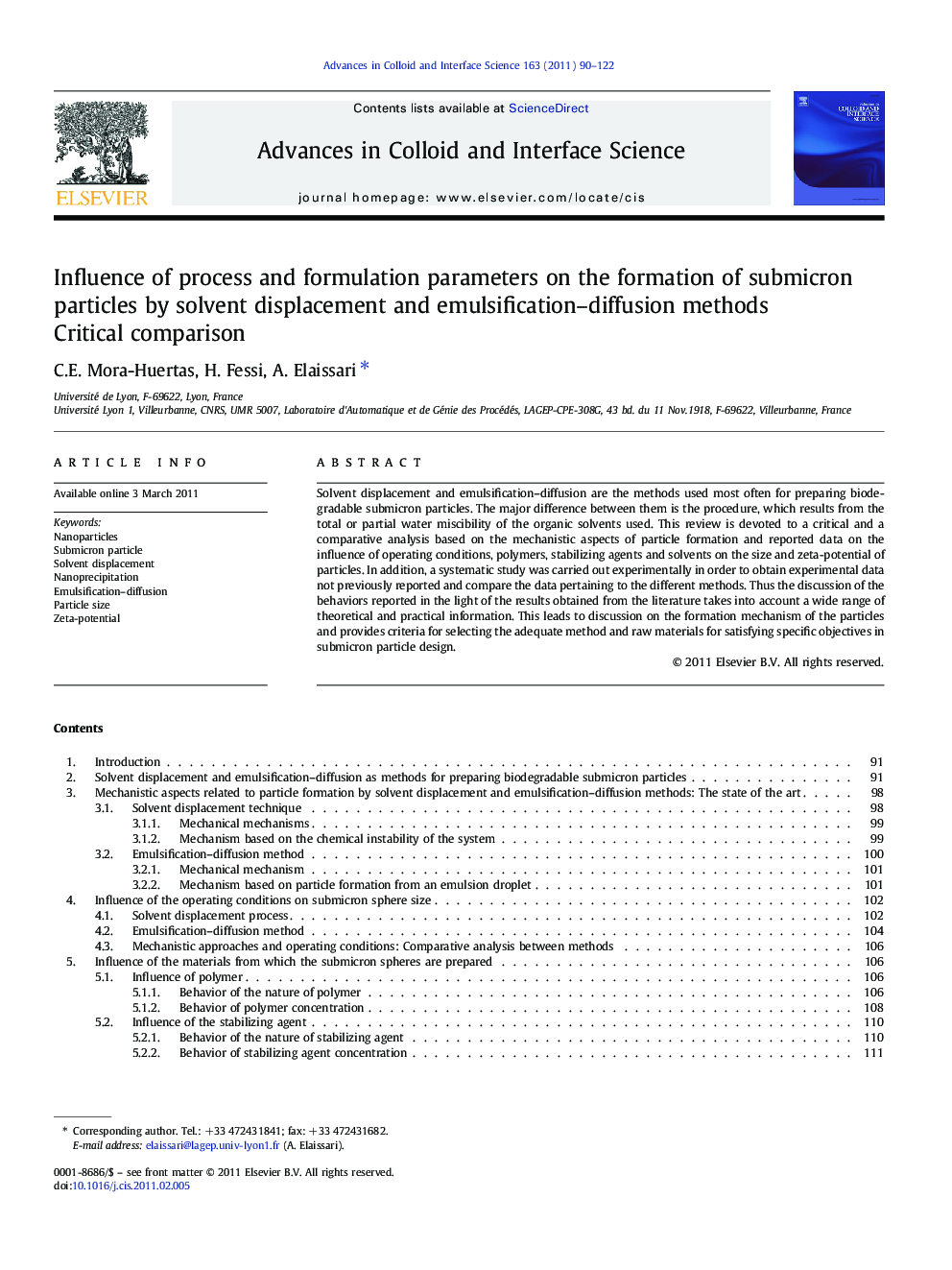| کد مقاله | کد نشریه | سال انتشار | مقاله انگلیسی | نسخه تمام متن |
|---|---|---|---|---|
| 590985 | 878937 | 2011 | 33 صفحه PDF | دانلود رایگان |

Solvent displacement and emulsification–diffusion are the methods used most often for preparing biodegradable submicron particles. The major difference between them is the procedure, which results from the total or partial water miscibility of the organic solvents used. This review is devoted to a critical and a comparative analysis based on the mechanistic aspects of particle formation and reported data on the influence of operating conditions, polymers, stabilizing agents and solvents on the size and zeta-potential of particles. In addition, a systematic study was carried out experimentally in order to obtain experimental data not previously reported and compare the data pertaining to the different methods. Thus the discussion of the behaviors reported in the light of the results obtained from the literature takes into account a wide range of theoretical and practical information. This leads to discussion on the formation mechanism of the particles and provides criteria for selecting the adequate method and raw materials for satisfying specific objectives in submicron particle design.
Figure optionsDownload as PowerPoint slideResearch highlights
► Comparative stat of the art of solvent displacement and emulsification–diffusion.
► The effect of recipe and process on the colloidal properties of nanoparticles.
► Polymer/solvent/water interactions are the driven mechanism in particle formation.
Journal: Advances in Colloid and Interface Science - Volume 163, Issue 2, 14 April 2011, Pages 90–122